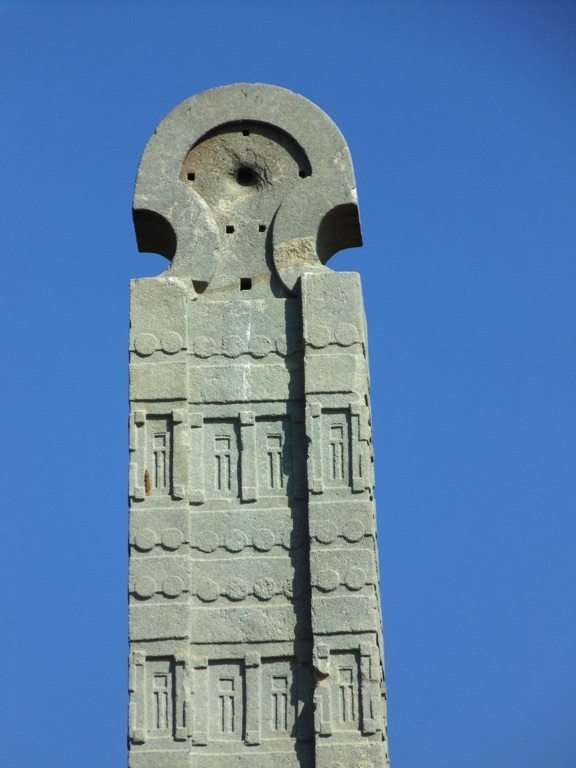The Obelisk of Axum: A Towering Testament to an Ancient Empire
The Obelisk of Axum stands as a majestic sentinel, a silent yet powerful testament to the engineering prowess and rich history of the Axumite Empire (c. 100 AD – 940 AD). This towering monument, etched with intricate designs, dominates the skyline of Axum, Ethiopia. Carved from a single block of granite, it exemplifies the Axumites’ sophisticated skills in stoneworking and structural engineering. Today, it draws visitors worldwide, eager to witness its grandeur and the mysteries it represents.
Get your dose of History via Email
A Beacon of Culture and Identity
Beyond its architectural marvel, the Obelisk of Axum holds deep cultural significance for the Ethiopian people. It marks the location of ancient royal tombs and embodies the Axumite belief in an afterlife. The obelisk’s return to Ethiopia in 2005, after being taken by Italian forces in the 1930s, was a powerful moment of reclaiming cultural heritage. This reunification ignited a sense of pride and reaffirmed Ethiopia’s rich cultural identity. It also sparked renewed interest in the preservation and study of Ethiopian history and artifacts.
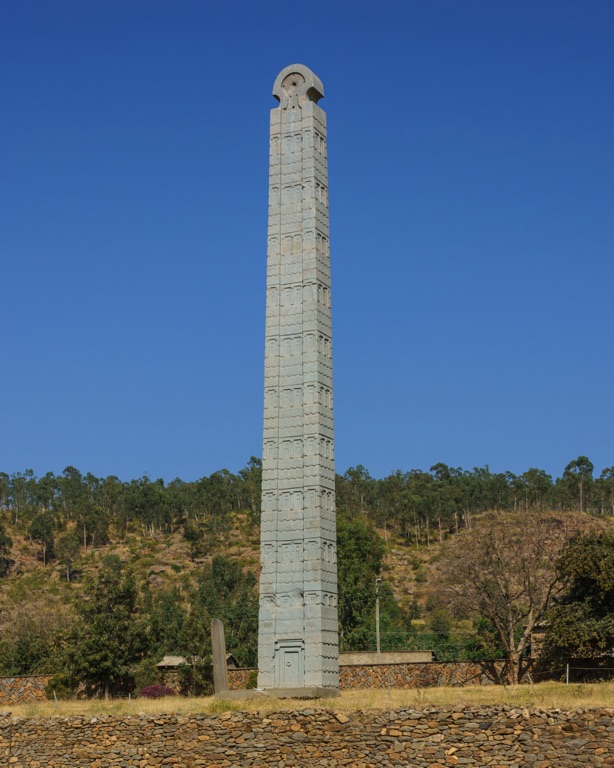
A Symbol of Unity in the Modern Era
Today, the Obelisk of Axum transcends a mere historical site. It serves as a unifying symbol for the Ethiopian people and a reminder of humanity’s shared history. Recognized by UNESCO as a World Heritage Site, it signifies the ingenuity, resilience, and cultural achievements of ancient civilizations. For scholars and tourists alike, it offers a window into the past, fostering appreciation and inspiring a path towards global cultural understanding.
A Legacy Etched in Stone: The Axumite Empire’s Might
The Obelisk of Axum is a testament to the Axumite Empire’s might. Flourishing from roughly 100 AD to 940 AD, the empire was a prominent commercial center, linking the Roman Empire with ancient India. Erected during a period of prosperity and power, the obelisk (also known as a stela) tells the story of Axum, a beacon of trade and political strength in the Horn of Africa.
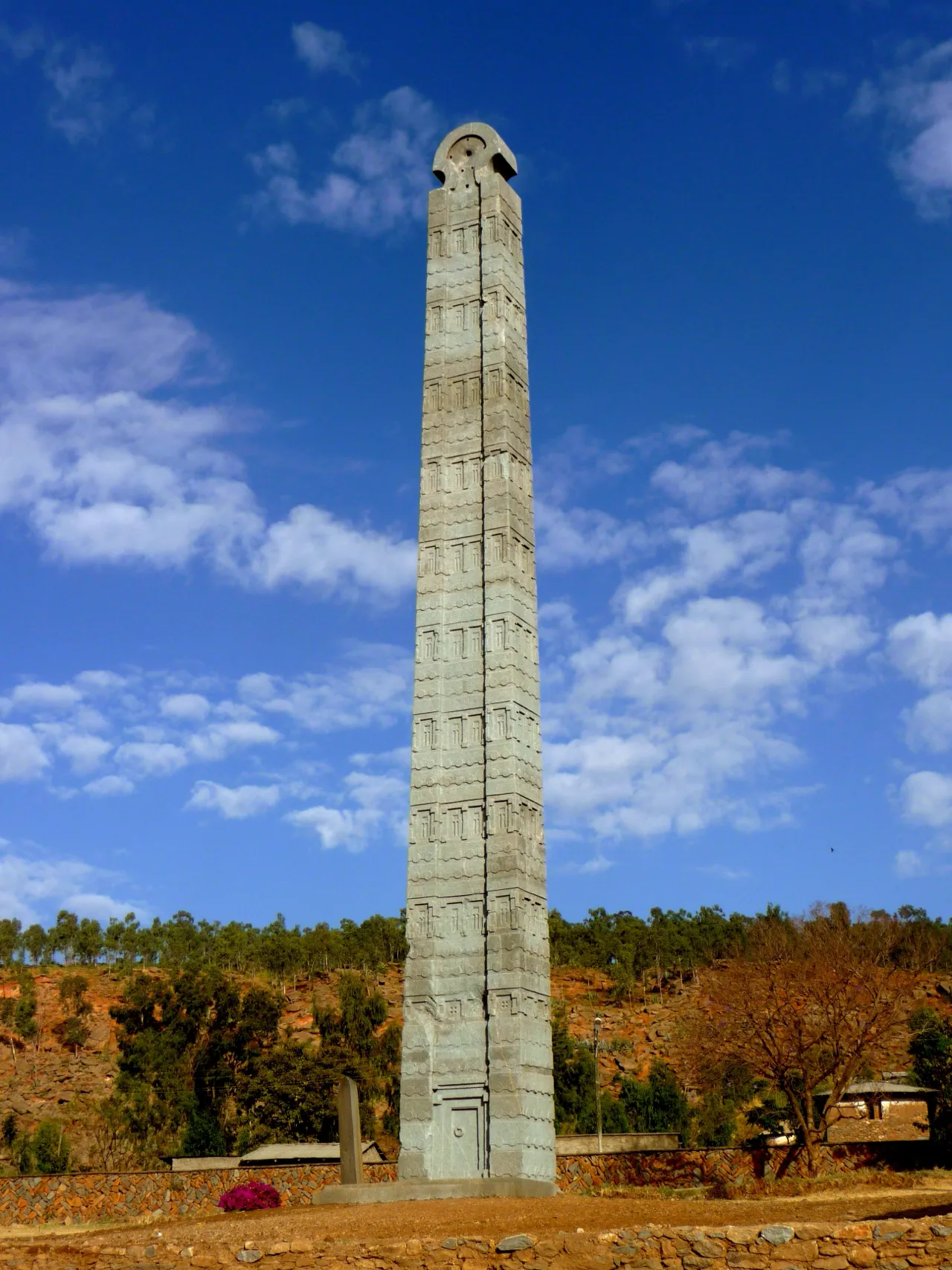
Architectural Mastery: A Granite Giant
Carved from a single piece of granite, the Obelisk of Axum stands at an impressive height of over 24 meters. Detailed carvings mimic the appearance of a multi-storied building, each “story” showcasing symbolic doors and windows, signifying the connection between the physical and spiritual realms. The crafting of such a monumental structure without modern machinery remains a source of awe and admiration.
More Than Decoration: Tombs and Legacy
The obelisks of Axum, particularly the great Obelisk, were not merely decorative. They served as grand tomb markers for the empire’s elite and royalty. The intricate carvings at the base of the Obelisk of Axum bear inscriptions offering insights into the religious and social practices of the time. This field of stelae portrays an ancient form of status expression and remembrance, connecting the living with their revered ancestors.
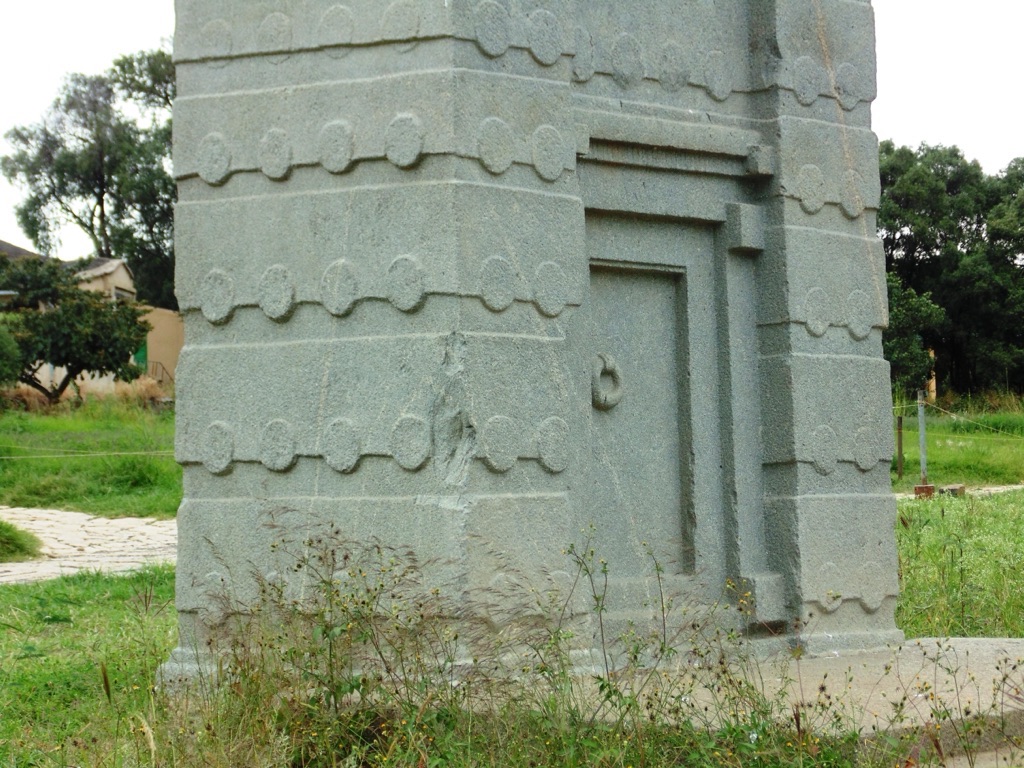
A Story of Rediscovery and Resilience
The story of the Obelisk of Axum is as majestic as its history. While it has always stood tall, its rediscovery by the Western world came much later. European explorers, upon reaching Axum, were struck by its grandeur. The obelisk, towering above the ruins, stood as enduring proof of a once-powerful civilization.
Inscriptions: A Bridge to the Past
The true narrative of the Obelisk’s significance began to be unraveled through its inscriptions. These stone-carved texts served as historical bridges, offering a glimpse into a time of emperors and sacred rites. Scholarly translation revealed the Obelisk’s purpose as a funerary marker, placing Axum at the heart of a vast and wealthy empire. For historians, the obelisk became a crucial piece in the puzzle of Ethiopia’s illustrious past.

A Catalyst for Further Exploration
The Obelisk’s discovery fueled further archaeological interest in Axum. Excavations aimed to understand an empire whose roots seemed as deep as the stone monolith itself. Teams from various nations collaborated, uncovering ancient artifacts and tombs scattered in the shadow of the obelisk. Each new discovery added another layer to the story, with the Obelisk serving as the anchor point for their exploration.
Shifting Perceptions and Global Resonance
The uncovering of the Obelisk of Axum challenged perceptions of sub-Saharan civilizations. It stood as stark evidence of a sophisticated society with remarkable architectural achievements. This discovery helped bridge gaps in understanding the continent’s complex historical tapestry. Today, the site offers a portal to the echoes of ancient Axumite glory, a civilization that resonated across seas
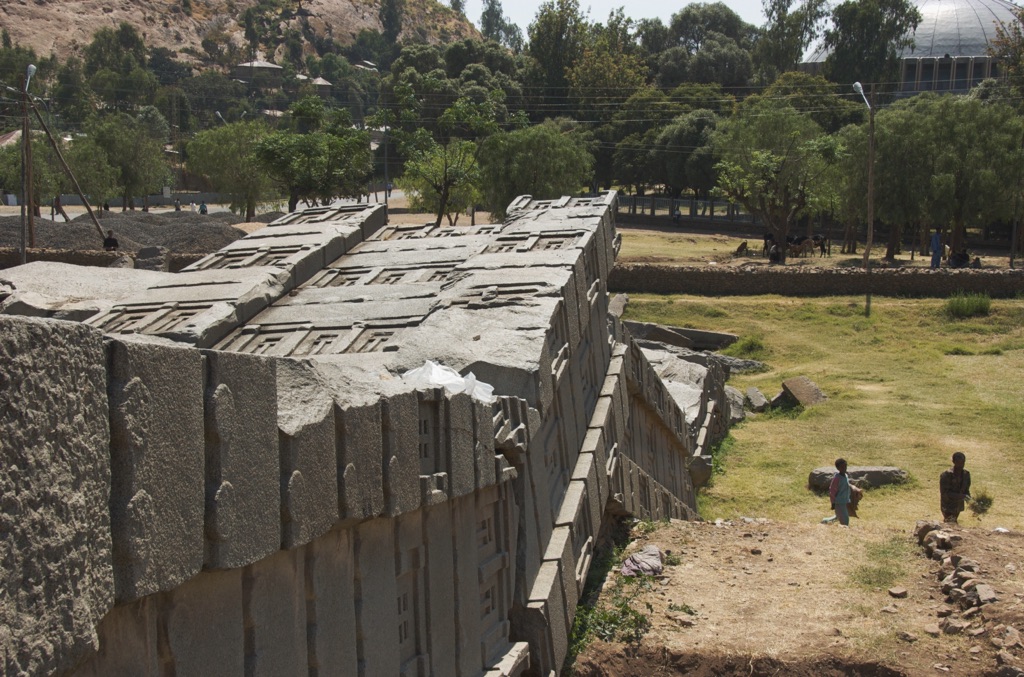
A Legacy in Stone: Unraveling the Obelisk’s Mysteries
The Obelisk of Axum stands not just as a testament to engineering skill but also as the cultural heart of the Axumite Empire. This towering monument served as a focal point for religious ceremonies, with its engravings revealing a society steeped in symbolism. Dating the obelisk has been crucial for piecing together Axum’s history. Radiocarbon dating suggests construction in the 4th century AD, while archaeological techniques like stratigraphy help pinpoint its erection during a specific ruler’s reign.
Despite these advancements, the Obelisk’s purpose and significance continue to spark debate. Some theories propose it was part of a pre-Christian ritual landscape, while others suggest it served as a powerful status symbol for a particular ruler. The interpretation of the intricate engravings, including the false doors and windows, adds another layer to the story. These features may represent a symbolic final resting place for royalty, mirroring Axumite architecture. Each theory and ongoing analysis deepens our understanding of this ancient masterpiece and the Axumite people who created it.

Conclusion
The Obelisk of Axum is a powerful symbol that transcends time. It stands as a testament to the ingenuity and achievements of the Axumite Empire, offering a glimpse into their rich culture and beliefs. Its enduring presence continues to inspire scholars, ignite imaginations, and serve as a reminder of our shared human history. The obelisk’s mysteries will likely continue to be debated and studied for years to come, solidifying its place as a captivating landmark that bridges the past and present.
Sources:


